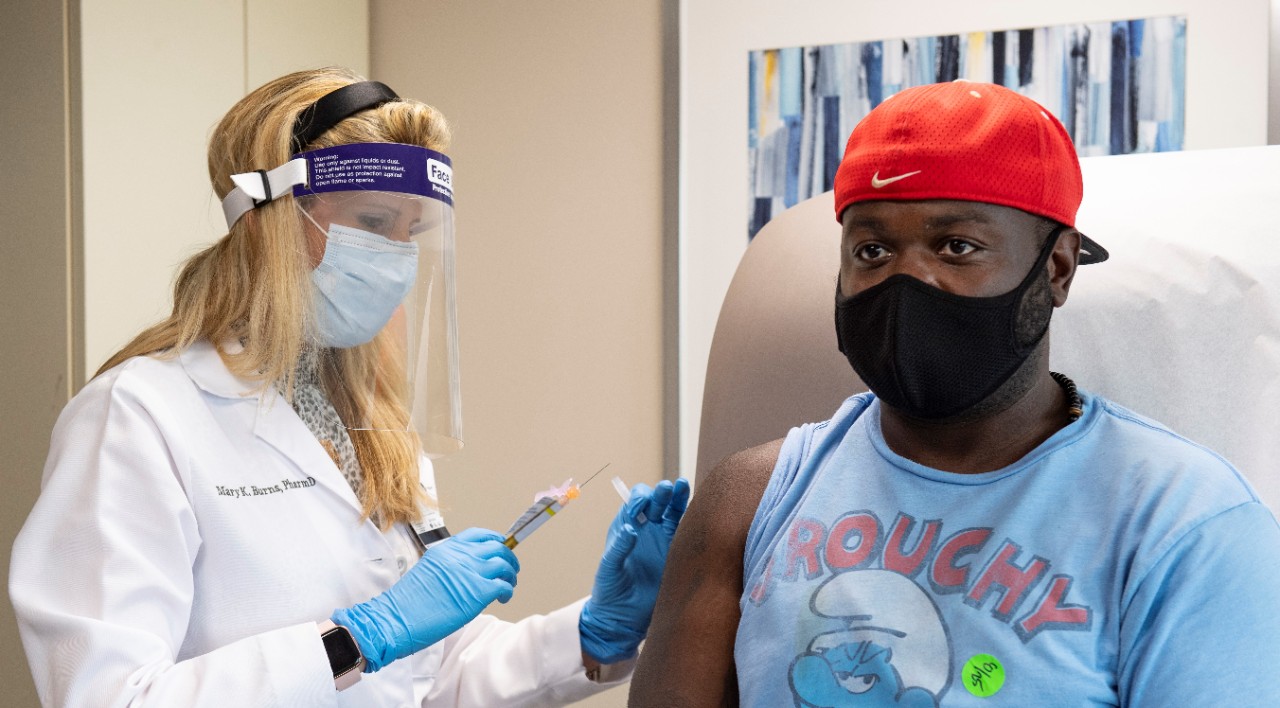
Spectrum News: Coronavirus vaccine questions, explored: How does it work, and are there side effects?
UC expert explains how the Moderna vaccine works
The development of COVID-19 vaccines is being closely watched as cases continue to spike. The Pfizer vaccine was just recently approved and is being distributed and the Moderna vaccine is expected to be approved soon as well. This news has prompted questions about what people can expect from the shots and how safe they are.
Spectrum News spoke with vaccine experts across the country to dig deeper on the most common questions about the vaccines. One of those was Carl Fichtenbaum, MD, of the Division of Infectious Diseases at the UC College of Medicine.

Carl Fichtenbaum, MD, in a lab in the UC Division of Infectious Diseases. Photo/Joe Fuqua II/UC Creative + Brand
The Pfizer and Moderna vaccines don’t involve injecting the virus itself.
“We’re not giving people the actual virus,” said Fichtenbaum, who oversaw a part of Moderna’s trial at UC. “We're giving them pieces that their body can respond to, so they can’t get COVID from that.”
According to information released by Moderna, the most common reactions to its vaccine included injection site pain, fatigue, muscle and joint pain, headache, and redness at the injection site. The company didn’t note how common those reactions were, but they did say they increased after the second dose of the vaccine.
“It doesn't mean you have COVID, it doesn't mean you have the disease,” Fichtenbaum said. “It means everything has gone right.”
Read the entire article here. Fichtenbaum was featured in a follow-up story by Spectrum News, which you can access here. He was also featured in a Cleveland.com story about vaccine side effects, which can be read here.
Lead photo of Jarelle Marshall, the first patient dosed in the UC/UC Health Moderna COVID-19 vaccine trial by Colleen Kelley/UC Creative + Brand.
Next Lives Here
The University of Cincinnati is classified as a Research 1 institution by the Carnegie Commission and is ranked in the National Science Foundation's Top-35 public research universities. UC's medical, graduate and undergraduate students and faculty investigate problems and innovate solutions with real-world impact. Next Lives Here.
Related Stories
Ohio nurses weigh in on proposed federal loan rule
December 12, 2025
Spectrum News journalist Javari Burnett spoke with UC Dean Alicia Ribar and UC nursing students Megan Romero and Nevaeh Haskins about proposed new federal student loan rules. Romero and Haskins, both seniors, were filmed in the College of Nursing’s Simulation Lab.
Bearcat Mascot, Cheer Team and scholarships help celebrate Decision Day
December 12, 2025
Cincinnati media organization provided news coverage of Decision Day activities at the University of Cincinnati on Dec. 10, 2025. Surprise announcements of the 2026 Marian Spencer Scholarship recipient occurred during the day.
UC awarded nearly $1 million to help fight infant obesity spike
December 12, 2025
University of Cincinnati researcher Cathy Stough spoke with Spectrum News1 about a nearly $1 million National Institutes of Health grant awarded to UC to help prevent infant obesity through early nutrition support and family-based interventions.
